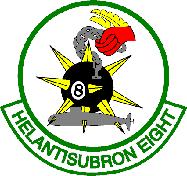

108: OPERATIONS FUNDAMENTALS
SH/HH-60F/H EAWS SPECIFIC
1. Define the following acronyms:
a. NOE- Nap Of the Earth.
b. IFR- Instrument Flight Rules.
c. VFR- Visual Flight Rules.
d. SAR- Search And Rescue.
e. CSAR- Combat Search And Rescue.
f. NVG-Night Vision Goggles.
g. CAL- Confined Area Landing.
h. ISOPREP- ISOlated Personnel REPort.
i. TERF- TERrain Flying.
j. RESCAP- RESCue Air Patrol.
k. RESCORT-REScue esCORT.
2. State the objective of CSAR.
A specific task performed by rescue forces to effect the recovery of distressed personnel during wartime or contingency operations.
3. State the purpose of the ISOPREP.
4. Discuss the sections of a passenger brief.
a. Survival equipment (proper wearing and use).
b. Entry/exit exit procedures.
c. Emergency procedures (crashing/ditching over land /water, emergency exits doors and jettisonable windows).
5. State the rated capacity of the cargo hook.
6. Discuss the following methods used for insertion and extraction of troops.
a. Fast rope:
This procedure is a method of rapidly inserting troops into areas in which helicopters are unable to land. Maximum limit of two (when rope is attached to rescue hook) or six (when rope is attached to FRIES bar) troops on the rope at any time.
b. McGuire:
This procedure is a method of inserting troops into or extracting troops from areas in which helicopter are unable to land. Limit of two lines deployed in aircraft and limit of one troop per line at any time.
c. Special Patrol Insertion/Extraction (SPIE) rig:
This procedure is a method of inserting troops into or extracting troops from areas in which helicopters are unable to land. Maximum limit of eight troops on SPIE rig at a time.
d. Heliborne, Visit, Board, Search, Seizure (HVBSS)-
These missions are designed to take control of a ship considered to be a Contact Of Interest (COI).
e. Combat Rubber Raiding Craft (CRRC)-
This procedure is a method of rapidly inserting troops and a Combat Rubber Raiding Craft (CRRC/Tethered Duck) into overwater areas.
7. Briefly discuss the factors to be considered for rescue swimmer deployment.
a. Number of survivors.
b. Location of survivors.
c. Visible injuries.
d. Flotation devices inflated/not inflated.
e. Parachute entanglement problem.
f. Sea State.
g. Fuel/Debris in water
h. Sea predators.
i. Feasibility of attempting rescue.
j. Rescue order.
8. Briefly describe the following aircraft launch conditions:a. Condition I (Alert 5)-
Aircrew is fully dressed and the APU is turning.
b. Condition II (Alert 15)-
When the crew in waiting in the ready room fully dressed.
c. Condition III (Alert 30)-
When the crew is at their recall or they can be recalled.
d. Condition IV (Alert 60)-
When the crew is on alert to be ready.
Return to
Kunz and King's SH-60 EAWS Tutorial
For inputs, comments, or questions please contact:
AW1 Benjamin Kunz
kimberly.a.king@navy.mil
AZC(AW/NAC) Kimberly King

